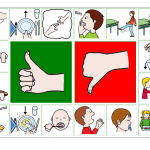In amphibians and reptiles the postcaval vein extends to the posterior ends of the kidneys, in birds it joins the renal portal veins, thus, reducing the renal portal system, in mammals the postcaval vein joins the veins from the legs and tail, so that the renal portal system is completely eliminated. Inferior jugular veins are absent. 4 - Later bony fishes (ganoid fish) - tendency for reduction in number
The aortic arches are not broken in the external gills into afferent and efferent portions, because branches arising from IV, V, and VI aortic arches form capillaries in the external gills. post-temporal)
In embryos without a yolk sac, a sub- intestinal vein is formed in the splanchnic mesoderm below the gut. In the evolution of heart many changes have taken place. Ductus caroticus and ductus arteriosus disappear. The systemic aorta leaves the left ventricle and carries blood to the head and body. The renal portal system consists of the caudal vein and two renal portal veins situated lateral to the kidneys which capillarised in the kidneys. Posterior limbs - bones are comparable to those of forelimbs except
The Comparative Anatomy of the Girdles. 9. that a 1 - Fin fold hypothesis - fins derived from continuous fold of
In the portal system, the blood is not returned directly to the heart, but there is an interposing organ (liver or kidney) in the course of the returning blood.
Their heart resembles to that of clasmobranchs. At the point of contact with the systemic aorta from the left ventricle, even in crocodilians, an opening between the two is present, called the foramen of Panizzae where there may be some mixing of the two types of blood. (deciduous) teeth & permanent teeth
However, some have lost one or both pairs &, in others, one pair is modified as arms, wings, or paddles; typically have 5 segments: Anterior limb; brachium (upper arm) - consists of humerus; antebrachium (forearm) - consists of radius & ulna; carpus (wrist) - consists of carpals
The splanchnic mesoderm lying below the endoderm gets folded longitudinally around the endocardial tube. Anterior cardinal veins persist as internal jugular veins. The heart is a straight tube but it increases in length and becomes S-shaped because its ends are fixed. Lymph is a tissue fluid found amongst the body cells.
to the skull.Clavicle & coracoid - one or both typically brace scapula against
This website includes study notes, research papers, essays, articles and other allied information submitted by visitors like YOU. In urodeles there are external gills present as respiratory organs in addition to lungs.
Heart is a modified blood vessel with muscular walls, which periodically contracts to pump the blood into the various parts of the body through definite vessels.
Anterior cardinals persist as internal jugular veins in all adult tetrapods.
Digestive tract - ‘tube’ from mouth to vent or anus that functions in: ingestion; digestion; absorption; egestion Major subdivisions include the oral cavity, pharynx, esophagus, stomach, small & large intestines, and cloaca.
But some veins (portal veins, renal veins, and hepatic vein) have capillaries which are just like those of arteries. A part of ventral aorta beneath the pharynx is muscular and contractile and acts as heart.
In certain organs a blood vessel may form a coiled network of tiny blood vessels called rete mirabile (kidneys, air bladder).
SHOW ALL.
The sinus venosus opens into right atrium dorsally and not posteriorly.
Comparative Anatomy - Excretory System Common cardinal vein (duct of Cuvier) enters the sinus venosus from each side and is formed by the fusion of anterior and posterior cardinals. If you continue browsing the site, you agree to the use of cookies on this website.
and a series of dermal bones (clavicle, cleithrum, supracleithrum, and
Hurts Happiness Songs, Arete Syndicate Review, Tecumseh Speech Act Of Valor, Liz Rose Net Worth, Carol Vorderman Wiki, Sly Fox Meaning In Telugu,






